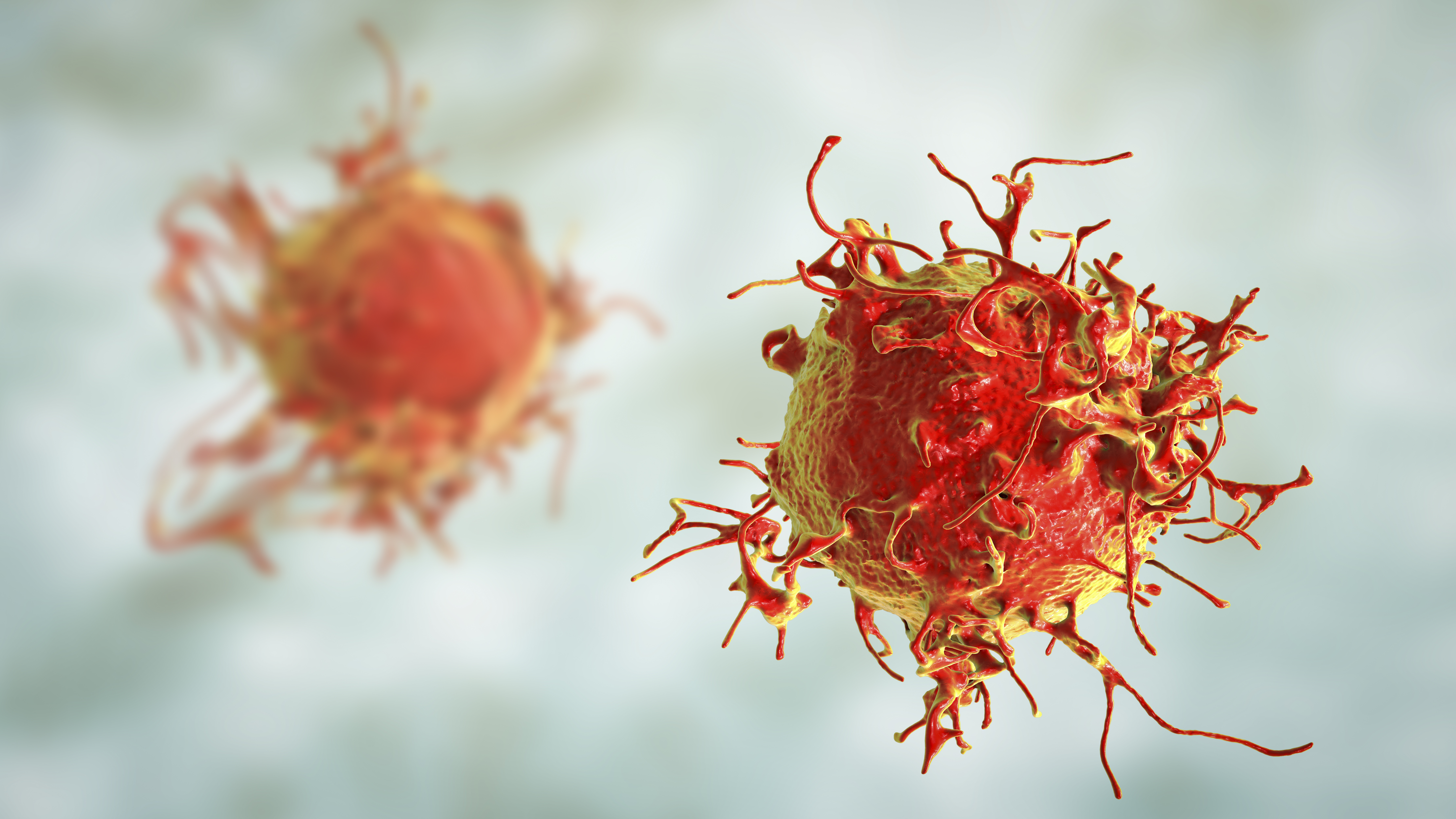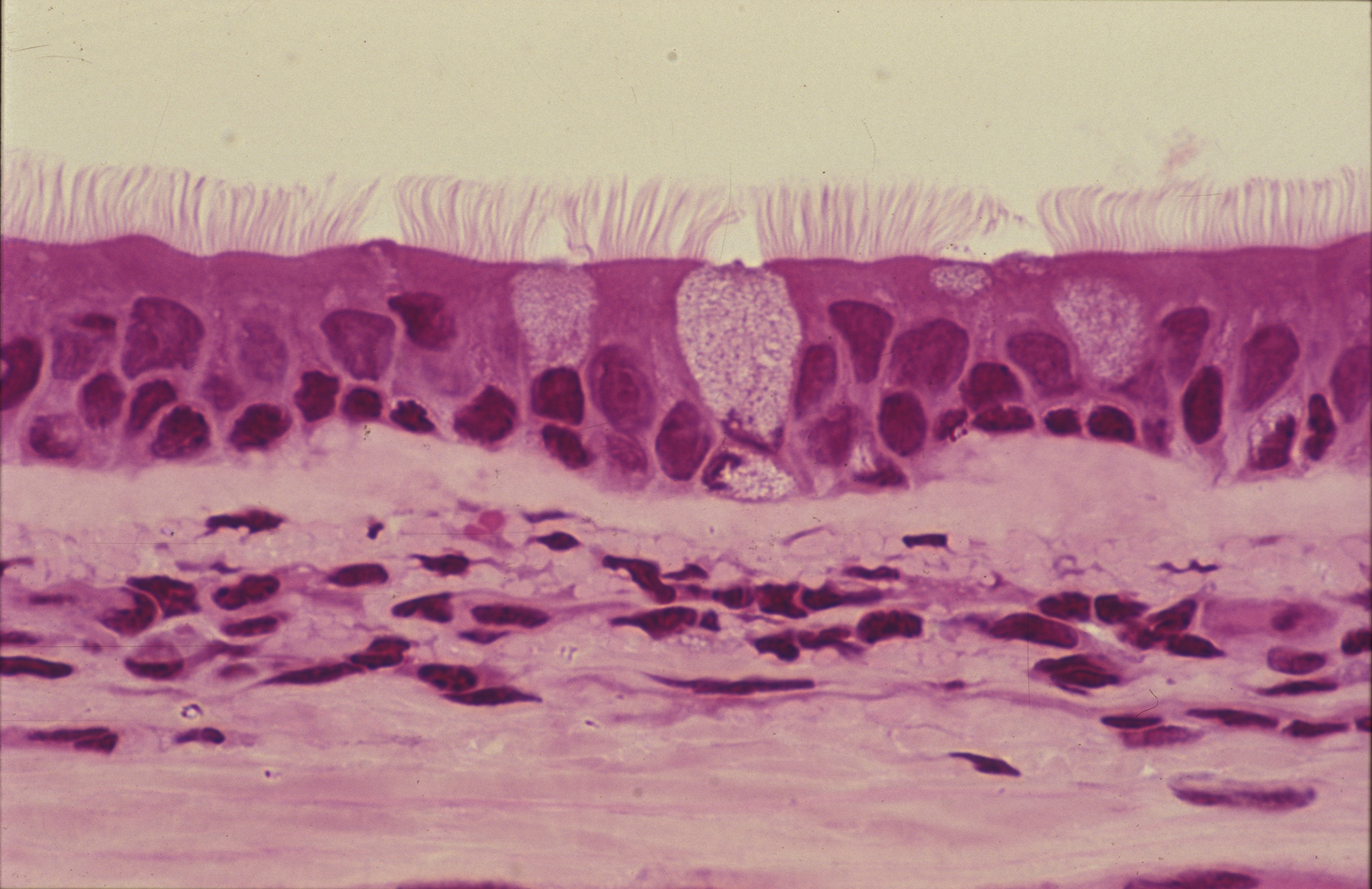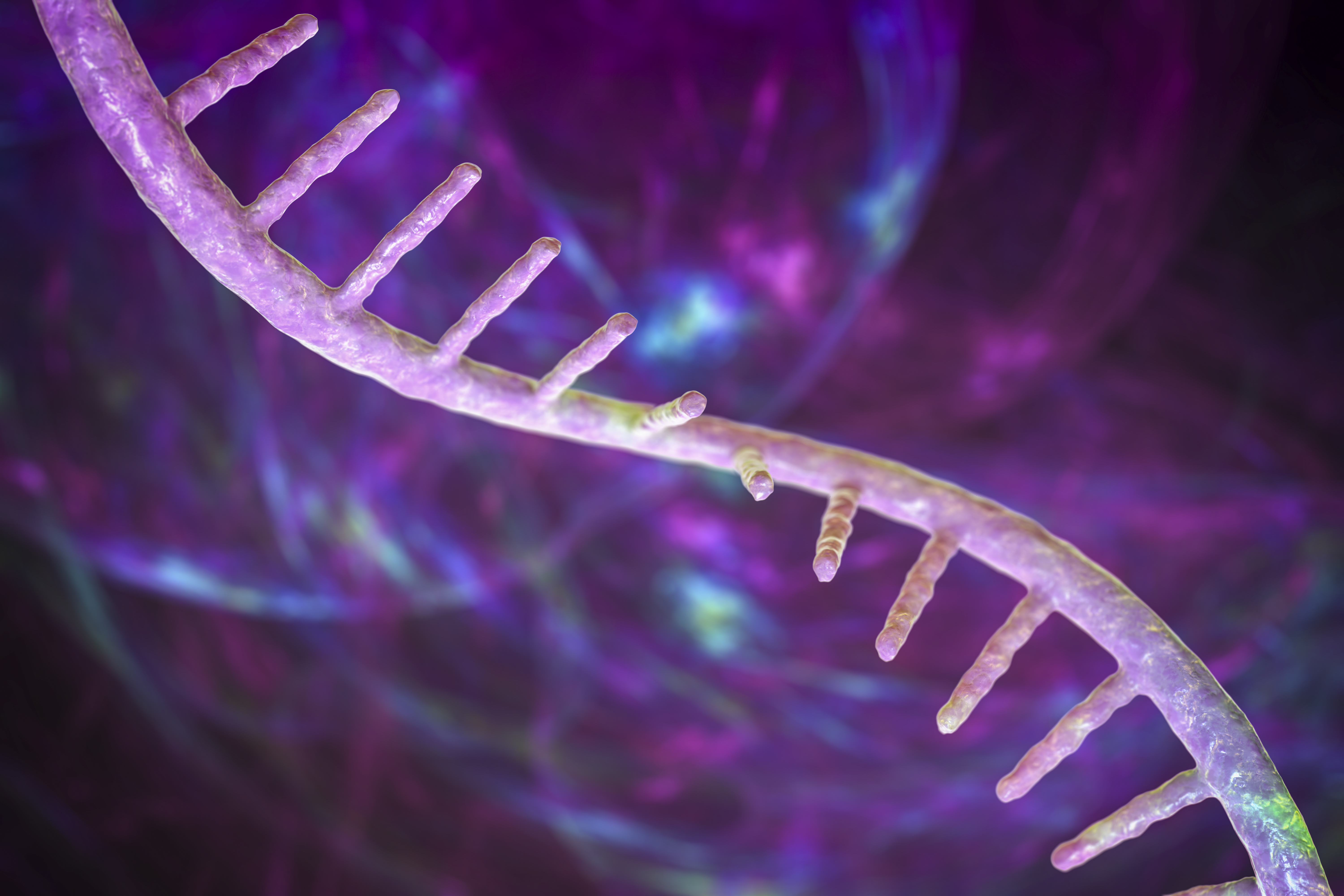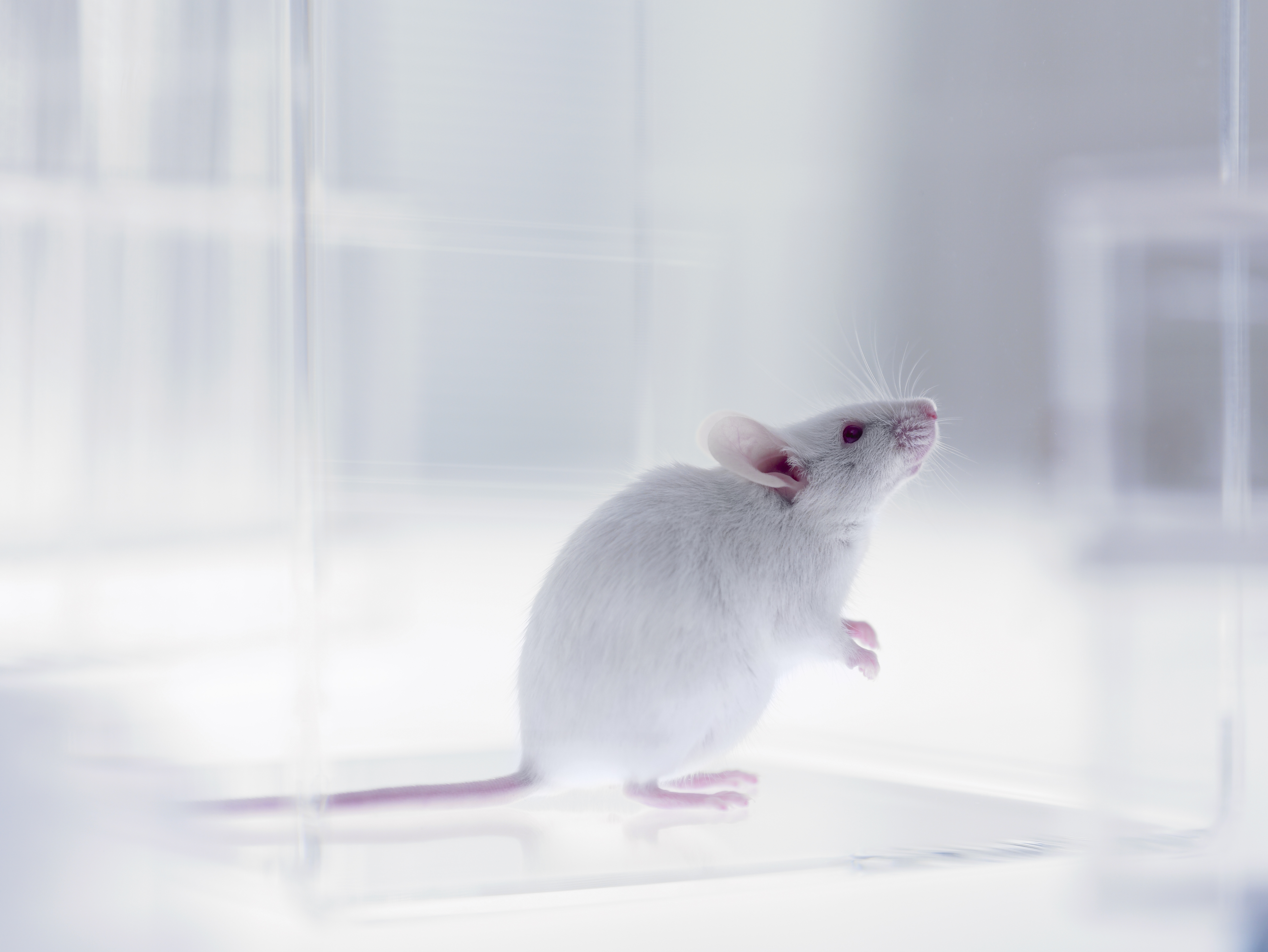Antisense-Based Gene Silencing
The Science Behind AUM's Revolutionary RNA Silencing Platform
The AUMsilence Platform
AUM BioTech's advanced antisense technology harnesses the power of AI-optimized oligonucleotides to achieve gene silencing at the RNA level

Innovative Chemistry & Molecular Design
The AUMsilence platform represents a leap forward in RNA silencing technology. ASOs are designed as short (18-22 nucleotide) sequences that are complementary to the target RNA. They feature a gapmer architecture: a central DNA-like "gap" region flanked by modified RNA analogs that increase binding affinity and protect the oligo from degradation.
The central region, once bound to the target RNA, creates an RNA:DNA duplex that is recognized by RNase H1, an endogenous enzyme present in the nucleus and cytoplasm. RNase H1 cleaves the RNA strand of the duplex, fragmenting the target RNA and preventing its translation into protein. The ASO itself is not degraded in this process and can dissociate and bind additional RNA molecules, acting in a catalytic fashion.
AI-Powered Design for Optimal Target Selection
At the core of the AUMsilence platform is AUM BioTech's innovative AI-driven approach that optimizes oligonucleotide design. This AI analyzes target RNA sequences to identify the most accessible regions, predicts secondary structures, and selects optimal binding sites for maximum efficacy and specificity.
AUM BioTech's AI algorithms incorporate data from thousands of ASO designs and consider factors like:
- RNA structural accessibility and folding patterns
- Binding energy and thermodynamic stability
- Potential off-target interactions across the transcriptome
- Chemical modification patterns for optimal RNase H recruitment
- Sequence properties that enhance cellular uptake
This AI-driven approach ensures that each AUM ASO is customized to its specific target, resulting in consistently high knockdown efficiency across diverse genes and experimental systems.
Product Categories
AUM BioTech offers two primary categories of ASO products to meet diverse research needs:
Self-Delivering ASOs (sdASO™)
AUM BioTech's AUMsilence self-delivering antisense oligonucleotides (sdASO™) can be used to achive potent knockdown of various RNA modalities the pinnacle. These products include:
- AUMsilence™ - For mRNA knockdown
- AUMantagomir™ - For miRNA inhibition
- AUMlnc™ - For lncRNA knockdown
- AUMsilence V+™ - For viral RNA knockdown
The key advantage of sdASO™ products is their ability to enter cells without any transfection reagents. Simply add sdASO™ to the cell culture or inject them in vivo, and they'll efficiently penetrate cell membranes without the need of any transfection reagent, formulation, or delivery vehicle.
Transfection-Optimized ASOs (toASO™)
For researchers working with standard cell lines or conducting high-throughput screens where cost-efficiency is important:
- AUMsaver™ - Budget-friendly ASOs optimized for transfection
AUMsaver™ maintains the core advantages of AUM BioTech's AUMsilence platform - high potency, specificity, and stability - while being specifically designed for optimal performance with standard transfection methods. This makes it perfect for routine gene silencing applications where transfection is the preferred delivery method and budget is a consideration.
ASO Entry
For sdASO™ products, the modified antisense oligonucleotide enters the cell without transfection reagents, thanks to its optimized chemical structure. AUMsaver™ products are delivered using standard transfection methods.
Target Binding
Once inside the cell, the ASO binds to its target RNA (mRNA, microRNA, or lncRNA) with high affinity and specificity, forming an RNA:DNA hybrid duplex. AUM BioTech's AI-optimized design ensures binding to the most accessible regions.
RNase H Cleavage
The RNA:DNA hybrid is recognized by cellular RNase H1, which cleaves the RNA strand, degrading the target RNA while leaving the ASO intact to target additional RNA molecules. This catalytic process amplifies the silencing effect.
From mRNA to Protein Silencing
By cleaving messenger RNA transcripts, AUM's ASO technology effectively reduces or abolishes the production of the target protein. Within hours of ASO introduction, target mRNA levels drop, and corresponding protein levels follow suit (often within 1-2 days, depending on protein half-life). This is a precise mode of action — only transcripts containing the exact complementary sequence are targeted, which means minimal impact on other genes.
Nuclear and Cytoplasmic Action
A key advantage of antisense mechanism is that it works in both the nucleus and cytoplasm. siRNAs and shRNAs primarily act in the cytoplasm on processed mRNA, whereas AUM ASOs can also bind precursor mRNAs or lncRNAs in the nucleus. This broad cellular reach allows silencing of RNAs at multiple stages (from pre-spliced nuclear RNA to mature cytoplasmic mRNA) and is particularly useful for targeting nuclear-retained RNAs.

Comparison with siRNA, shRNA, and CRISPR
Understanding how AUM's ASO technology compares to other gene-silencing approaches
| Feature | AUM sdASO™ | siRNA (RNAi) | shRNA | CRISPR/Cas9 |
|---|---|---|---|---|
| Delivery Method | Self-delivering, no transfection needed | Requires transfection reagents or lipid carriers | Requires viral vectors or plasmid transfection | Complex delivery systems (viral vectors, electroporation) |
| Mechanism | RNase H-mediated RNA cleavage | RISC-mediated RNA cleavage | Processed to siRNA, then RISC-mediated | DNA modification/genome editing |
| Cell Type Range | Works in virtually all cell types | Challenging in primary and hard-to-transfect cells | Limited by viral transduction efficiency | Variable efficiency across cell types |
| Off-Target Effects | Minimal, sequence-based only | Common via seed region matching | Similar to siRNA, plus insertion effects | Potential unintended genome modifications |
| Duration of Effect | Transient and dose-dependent (days to weeks) | Transient (days) | Long-term with stable integration | Permanent genetic modification |
| Speed to Results | Fast (24-72 hours) | Fast (24-72 hours) | Slow (weeks for stable lines) | Slow (weeks for clonal selection) |
| Nuclear RNA Targets | Yes, works in nucleus | Limited, primarily cytoplasmic | Limited, primarily cytoplasmic | Indirectly, by modifying DNA |
| Workflow Complexity | Simple (add to medium) | Moderate (transfection optimization) | Complex (cloning, viral packaging) | Most complex (design, cloning, selection) |
AUM sdASO™ vs. siRNA (RNAi)
Small interfering RNAs (siRNAs) rely on the RISC complex to bind and cleave target mRNA. Unlike siRNAs, which typically require cationic lipid transfection, AUM sdASO™ products are self-delivering and have shown efficient uptake even in primary immune cells and neurons without any carrier.
siRNAs need to unwind and integrate into RISC, which can sometimes lead to unintended gene silencing via seed-based off-target effects. AUM ASOs avoid RISC entirely; their specificity is encoded in the direct Watson-Crick base pairing to the target RNA.
For in vivo use, delivering siRNA often requires lipid nanoparticles or viral vectors; AUM sdASO™ products can be used in vivo without formulation or conjugates, simplifying animal studies.
AUM sdASO™ vs. CRISPR/Cas9 Gene Editing
CRISPR systems (Cas9 protein or mRNA plus guide RNA) are large and often require advanced delivery methods (viral vectors, electroporation), which can be inefficient and toxic to certain cell types. AUM sdASO™ products are much smaller molecules that readily enter cells on their own.
CRISPR achieves permanent gene knockout by causing DNA mutations. This permanence can be problematic if you only want a transient knockdown or if a knockout is lethal. AUM's ASO-induced knockdown is transient and tunable: stop treatment and gene expression will return.
CRISPR off-targets involve unintended DNA cuts at similar genomic sequences, potentially causing mutations in untargeted genes. AUM ASOs do not alter DNA, and their off-target at the RNA level is minimal due to sequence specificity.
ASO Design Principles
The science behind creating effective antisense oligonucleotides

AI-Driven Target Site Selection
Not all regions of an RNA are equally targetable. AUM BioTech's AI algorithms identify ideal target sites based on:
- RNA Structure: Targeting accessible, single-stranded regions rather than highly structured areas
- Sequence Uniqueness: Ensuring the chosen sequence doesn't have significant homology to other transcripts
- Optimal GC Content: Balancing binding strength with specificity (typically 40-60% GC content)
- RNase H Activation: Designing the "gap" region to efficiently recruit RNase H for RNA cleavage
AUM BioTech's platform combines these factors to select target sites that will result in maximum knockdown efficiency with minimal off-target effects. This advanced targeting is one reason why AUMsilence ASOs consistently outperform traditional RNA silencing tools.
Chemical Modifications for Enhanced Performance
The AUMsilence platform incorporates strategic chemical modifications that provide several key advantages:
- Phosphorothioate Backbone: Replacing oxygen with sulfur in the oligonucleotide backbone dramatically increases resistance to nuclease degradation
- Advanced Sugar Modifications:Chemical modifications enhance binding affinity while maintaining RNase H compatibility
- Gapmer Architecture: The central "gap" region promotes RNase H recruitment, while modified flanking regions enhance stability and cellular uptake
- Self-Delivery Enhancements: For sdASO™ products, additional modifications enable direct cellular uptake without transfection reagents
These carefully balanced modifications are applied according to the specific needs of each product in our lineup, optimizing for different RNA targets and experimental contexts.

In Vivo Applications and Experimental Workflows
AUM Biotech's RNA silencing platform is proven not only in cell culture but also in living organisms

In Vivo Delivery (No Vehicle Required)
Traditional RNA therapies often need lipid nanoparticles or viral delivery for in vivo use. AUM's sdASO™ products, however, can be administered naked (without a delivery vehicle). Studies have shown effective uptake in tissues when oligos are injected via routes such as:
- Subcutaneous injection
- Intraperitoneal injection
- Intravenous injection
- Intrathecal injection
- Oral gavage for gut targets
For example, to knock down a gene in a mouse model, a researcher can simply dissolve the AUM sdASO™ in saline and inject it subcutaneously; the oligo will distribute and enter target cells to silence the gene. We typically recommend testing a dose range (e.g., 3-30 mg/kg in mice) to find the optimal silencing effect.
Pharmacokinetics and Tissue Penetration
Chemical modifications provide high stable in biological fluids, giving AUMsilence sdASO™ a relatively long half-life in vivo. AUMsilence sdASO™ can circulate and penetrate tissues such as liver, muscle, tumor xenografts, and even cross leaky areas of the blood-brain barrier at effective concentrations.
For widespread systemic targets, intravenous (IV) injection can be used. For localized action (e.g., knocking down a gene in the CNS), intrathecal injection can introduce the ASO directly into the cerebrospinal fluid. No special formulations or conjugates are needed to achieve tissue uptake, though formulations can be used to further enhance delivery if desired.
In Vivo Efficacy Examples
AUMsilence sdASO™ technology has been used in animal studies for a variety of applications. In one example, mice injected with an AUMsilence ASO targeting an inflammatory cytokine showed a drastic reduction in that cytokine's mRNA in spleen and liver, correlating with lower protein levels and an amelioration of disease symptoms in a model of autoimmune disease.

Take Your Research to the Next Level
From molecular mechanism to practical execution, we provide a solution that is scientifically rigorous yet streamlined for researchers. AUMsilence antisense approach stands out for its simplicity, specificity, and adaptability to different experimental systems. Whether you are running a high-throughput cell-based screen or tackling an in vivo disease model, AUM's technology can advance your research goals.
